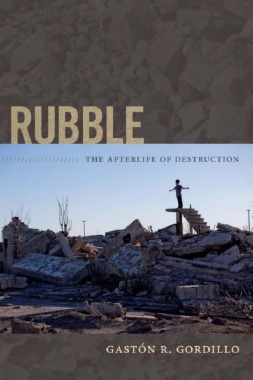At the foot of the Argentine Andes, bulldozers are destroying forests and homes to create soy fields in an area already strewn with rubble from previous waves of destruction and violence. Based on ethnographic research in this region where the mountains give way to the Gran Chaco lowlands, Gastón R. Gordillo shows how geographic space is inseparable from the material, historical, and affective ruptures embodied in debris. His exploration of the significance of rubble encompasses lost cities, derelict train stations, overgrown Jesuit missions and Spanish forts, stranded steamships, mass graves, and razed forests. Examining the effects of these and other forms of debris on the people living on nearby ranches and farms, and in towns, Gordillo emphasizes that for the rural poor, the rubble left in the wake of capitalist and imperialist endeavors is not romanticized ruin but the material manifestation of the violence and dislocation that created it.
- Contents
- Acknowledgments
- Introduction: Constellations
- Part One. Ghosts of Indians
- Chapter One. A Haunted Frontier
- Chapter Two. On the Edge of the Void
- Part Two. Lost Cities
- The Destruction of Space
- Chapter Three. Land of Curses and Miracles
- Chapter Four. The Ruins of Ruins
- Part Three. Residues of a Dream World
- Treks across Fields of Rubble
- Chapter Five. Ships Stranded in the Forest
- Chapter Six. Bringing a Destroyed Place Back to Life
- Chapter Seven. Railroads to Nowhere
- Part Four. The Debris of Violence
- Bright Objects
- Chapter Eight. Topographies of Oblivion
- Chapter Nine. Piles of Bones
- Chapter Ten. The Return of the Indians
- Conclusion: We Aren’t Afraid of Ruins
- Notes
- References
- Index

